Immigration & society
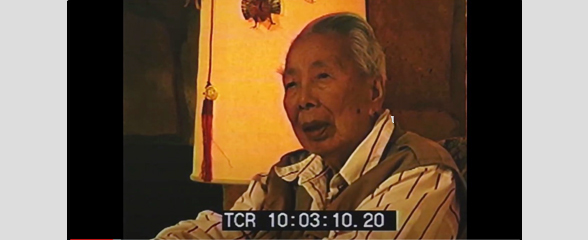
2007.006.074 Oral History Interview with Leah Hing and Frances M. Tong, Part 1
There were two interviews recorded on this tape. The interviews are with Leah Hing, the first Chinese American woman to earn a pilot license, and Frances M. Tong, sister of Hazel Ying Lee. The interview begins with Leah Hing discussing her flying career and her encounters with Hazel as acquaintances working in the same building. At the 8 minute mark, the interview with Frances M. Tong begins. Frances begins by recalling stories about her childhood growing up in the United States. A series of questions are asked about the personality of her sister, Hazel, and her career as a pilot in China, as well as her in the WASP (Women Airforce Service Pilots) program. Other topics include discrimination, immigration, and family names. These interviews are part of the Hazel Ying Lee & Frances M. Tong Collection and were conducted as part of the research and making of the documentary film, A Brief Flight: Hazel Ying Lee and the Women Who Flew Pursuit (2002), directed by Alan Rosenberg.
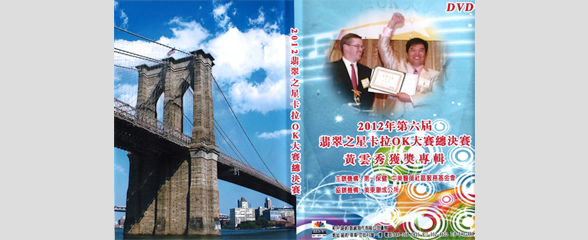
2013.022.010 Oral History Interview with Yun Xing Huang
Yun Xing Huang was interviewed by MOCA to talk about his immigration and living experiences in New York City’s Chinatown. As a professional singer, Huang owned a nightclub in Fujian before coming to the US during the prevalent immigration wave in China. He worked as a food delivery person before opening a floral shop on his own, singing songs for wedding parties, and acting in films. He praised the brave spirit of Fujianese people but touched upon the geographical discrimination between Changle people and Lianjiang people, who are both from Fujian province, in Chinatown.
However, when asked about his views on Chinatown, Huang expressed negative sentiments. He drew from his own experience in a film depicting the living situation in Chinatown, where new immigrants live in small spaces and must even climb up to four-level beds due to limited budgets. This continues to be a reality for many immigrants in Chinatown today.
In the end, Huang emphasizes the importance of legal status for Chinese immigrants. Their temporary immigrant status discourages them from traveling, buying houses, and conducting large business transactions. Only legal status can guarantee stability and prosperity for the Chinese community.

2014.035.001 The Family Journey of The Chin Family - Interview with Gee Fung and Yep Pyu Chin (Peter and Patricia)
Gee Fung (Peter) Chin and Yep Pyu (Patricia) Chin sit down with MOCA to discuss their family’s history and the story of their immigration from Burma to the United States. Peter and Patricia left Burma in 1970 when it was under military rule and decided to immigrate to the United States for more freedoms and economic opportunities. The two had met at Emmanuel Baptist Church in Burma, where they regularly attended Sunday school and youth fellowship. A year after their marriage, they found out that they were accepted as immigrants to the United States and landed in San Francisco with their first-born baby daughter in tow. After arriving only three days, they received a call from an uncle, who convinced them to move to New York. Once in New York, they initially stayed with Peter’s brother-in-law in Harlem but ultimately settled in Borough Park, Brooklyn. The couple briefly reflect on memories of what both neighborhoods were like at that time, and how life slowly became better and better as Peter landed a job and found success as an accountant. Patricia shares how her initial experience of America was colored by difficult first years of motherhood due to having to care for three babies closely spaced together, but she grew to really love living in America. The Chins describe their identity as very much Chinese American because they were raised Chinese and consider themselves as typical Chinese people who respect their parents and celebrate traditional holidays, but are also proudly American. Both take pride and thank God for the close-knit extended family they were able to build. Peter and Patricia each sponsored their parents to live with them in the United States, and even now, they see their own adult children regularly as well. Each bring up stories that they want their daughters to hear, including of Peter’s long lost sister, who was given up as a baby for adoption, and Patricia’s widowed mother, who courageously moved the young family to Burma and worked hard to raise Patricia and her older brother on her own. Peter notes that he earned an MBA and the children were all able to receive advanced degrees and achieve a good life in this country. Because of how blessed they are, they firmly believe that they made the right decision to come to America and want future generations in their family to know that.

2014.035.002 The Family Journey of The Chin Family-Interview with The Chin Sisters
The four sisters Grace Chin Chan, Judy Chin Wong, Anna Chin Tze, and Jennifer Chin Dussich sit down with MOCA to discuss their family history. They begin by describing growing up in Brooklyn and the communities and activities that they participated in there. They recount family stories from vacations and being rebellious teenagers. The sisters take turns discussing how grateful they are for their parents’ sacrifices, but also how they feel so grateful to have been raised with their parents’ values and how they cherish their parents’ legacy. The Chin sisters still have dinner with their parents and families every week and share other lessons from their childhood.
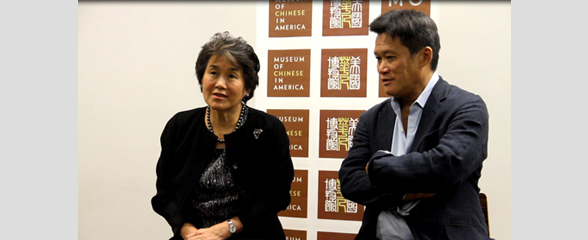
2014.035.003 The Family Journey of The Lee Family
Sandy and Doug Lee sit down with MOCA to discuss the history of their family, as found through archival and family research. They bring up the curio shop that their family kept and finding pictures from this business through a cousin. They discuss the involvement of their father in the U.S. Army and his position as translator for American diplomats who met with Mao and his party. They discuss how their Uncle funded one of the first Chinese-American film companies in the U.S., called Great Wall Films, to challenge American representations of Chinese people in film. They go back to discussing the store on 31 Pell Street, and discuss the beginning and then the history of the store. Their other uncle and their father had insurance and travel businesses in this building as well which still exist today. The businesses in this building grew and changed to adapt to the needs of the growing Chinatown community in San Francisco before the earthquake of 1906. They discuss the impact of the Chinese Exclusion Act on their family, with their relatives having to take long routes to and from China to avoid deportation. The Chinese Exclusion Act was also very isolating for the family, as it prevented them from seeing their other family members back in China. Since their grandmother and grandfather lived in such a dangerous neighborhood at the turn of the century, their grandmother did not go into the street by herself and instead spoke to other women by yelling from fire escape to fire escape. A Church took in their grandmother and taught her American customs and helped with childcare. During the Depression, the family relocated back to Hong Kong with their grandfather staying in Chinatown to run the business. Their father was educated in the U.S. and in Shanghai, which made him valuable as a translator since he knew four dialects of Chinese. Sandy and Doug discuss growing up in Flushing and later Great Neck, Long Island, and their ability to assimilate into American culture. They discuss more family history and then their family’s involvement with MOCA.

2014.035.004 The Family Journey of Lucy Kan
The Journey Wall is a custom art installation created for MOCAs lobby by renowned artist/designer Maya Lin. The wall is composed of bronze tiles through which Chinese Americans can permanently honor and remember their family roots. Each tile bears the name of an individual or family, their ancestral home, and current place of residence in America. The complete wall will highlight the expansiveness of the Chinese American Diaspora and the diversity of immigration stories from across the country - from artists to businessmen. The interviews in this collection are the stories of the Chinese American families that are part of the Journey Wall installation.
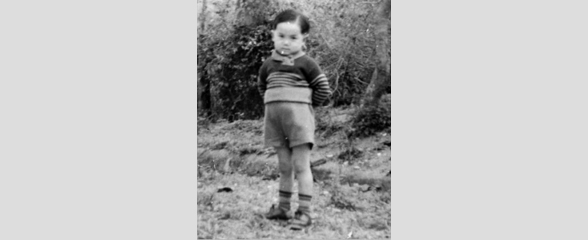
2014.035.005 The Family Journey of Victor Kan
Victor Kan discusses his philosophy and the history of his family with MOCA. He discusses his education at the University of Chicago and his experience growing up Chinese in America with only a small understanding of English. He discusses this experience in depth, and growing up learning from his classmates at age 13 how to speak English. His classmates encouraged him to join Boy Scouts and go to school dances with them, and he felt very supported by this American community. Victor went on to study Computer Science at UChicago. He discusses his childhood vacationing in Jong Son, China and explains that he bought his Journey Wall tile to give back to the community, but also to show his grandchildren and great grandchildren where they came from. He is not sad that his grandchildren may not look exactly like him; instead he believes that his children have found love and he is very happy for them. He discusses his philosophy of life for all immigrants and shares the anecdote of how he met his wife, Lucy.

2014.036.002 Oral History Interview with Cambao de Duong November 17, 2003
Cambao de Duong is a Chinese-Vietnamese immigrant born in Saigon, South Vietnam to Chinese parents. Cambao grew up in a multicultural environment and learned to speak Chao Chow, Vietnamese, Cantonese, and Mandarin. He would receive a high level of education in Vietnam, and inspired by one of his principals, became an educator. De Duong would teach at the college level until he received an officer commission in the South Vietnam army. Given his previous service in the South Vietnamese government and army, he was granted refugee status and was quickly approved to relocate to the United States. When Cambao first came to New York City, he decided to work in a non-profit organization, where he assisted Asian immigrants with forms and vocational training. De Duong gradually became heavily involved with social work and community advocacy, becoming co-founder of the Greater New York Vietnamese American Community Association, as well as the Indo-China Sino-American Senior Citizen/Community Center. He makes observations of the changing demographics, crime rate, and sanitation of Chinatown during his decades-long involvement with the local community. De Duong shares his experience in Chinatown during the 9/11 attacks, and notes how similar it was to his experiences in the Vietnam War. He discusses the economic impact of the attacks and goes into detail regarding unemployment and increased requests for social services. Additionally, he observed that while the restaurant businesses in Chinatown mostly recovered two years after the attack, the garment industry will likely not recover.
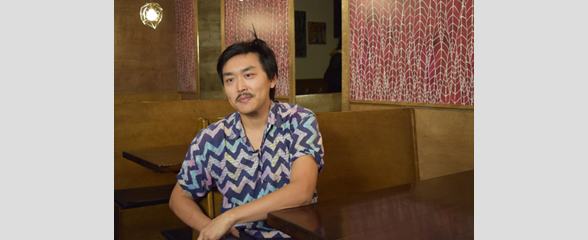
2016.037.027 Oral History Interview with Jonathan Wu 2015/11/09
This oral history focuses on the culinary practice of Jonathan Wu. He discusses his training and his time living in France and Italy. He discusses how he learned his Chinese cooking from his mother along with developing dishes for his restaurant Fung Tu.
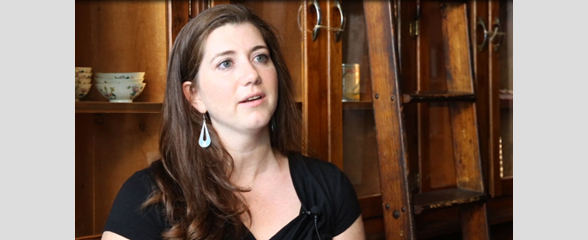
2018.034.001 Oral History Interview with Genia Blaser
In this oral history interview, Genia Blaser shares her experience working as a staff attorney at the Immigrant Defense Project and how her work informs contemporary immigration laws and policies. She talks about how she is connected to the Golden Venture story and what must be done to bring about meaningful change to help at-risk immigrant communities in the United States today.